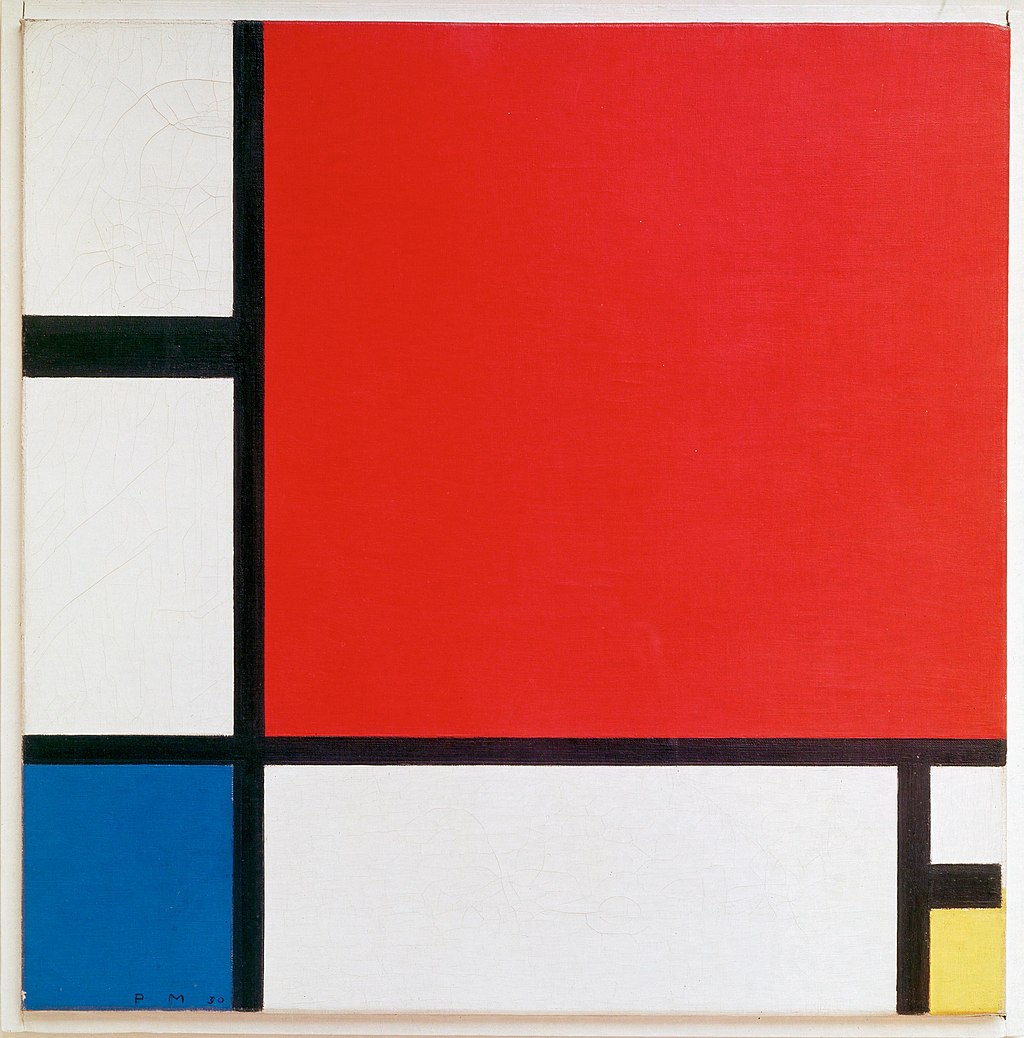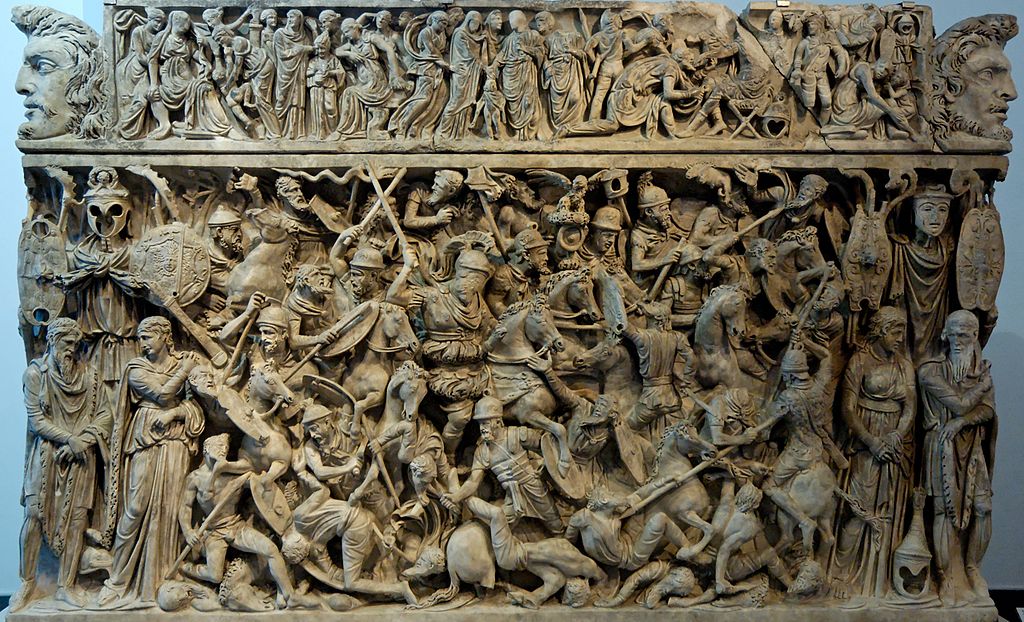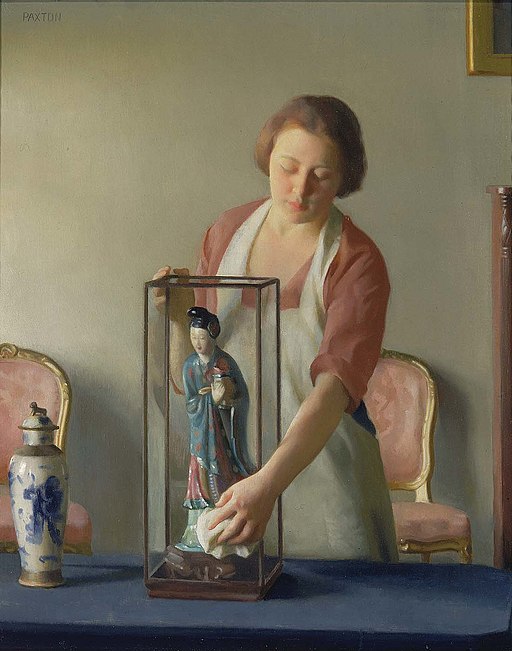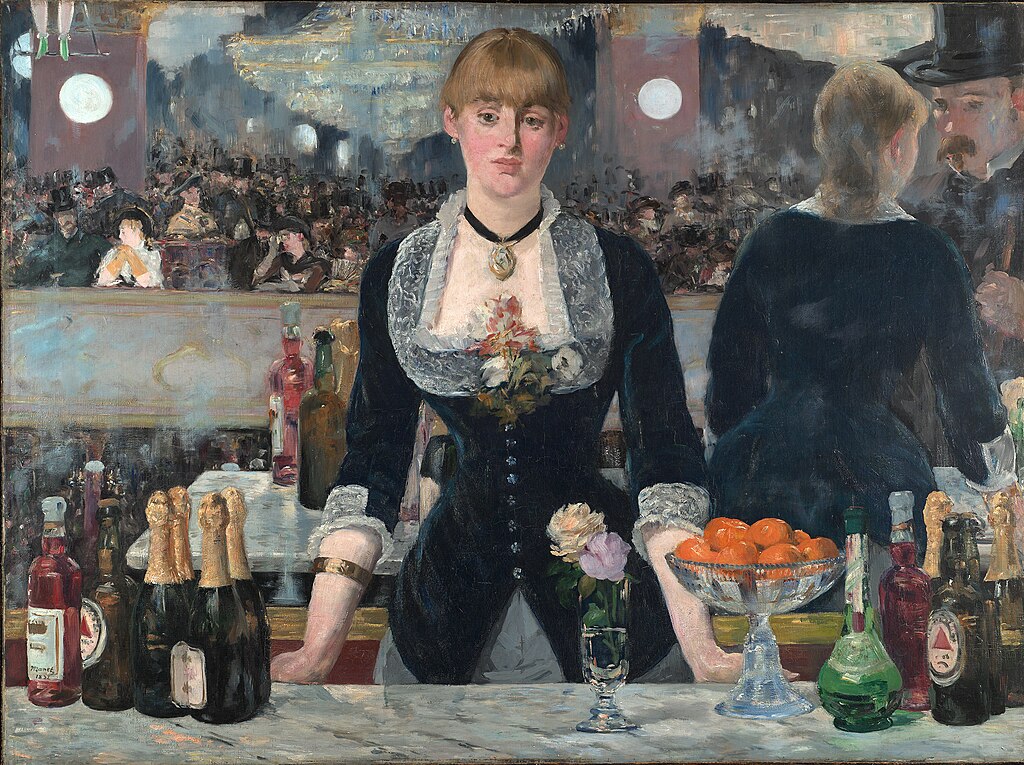
“Composition with Red Blue and Yellow” by Piet Mondrian is a well-known work of abstraction in which thick, black brushwork defines the borders of the different geometric figures.
The black brushwork is minimal, but it is masterfully applied to become one of the defining features of the work.
This painting is a product of the Dutch, De Stijl movement, and Mondrian is regarded as the most prominent artist of the movement. He proclaimed in 1914:
“Art is higher than reality and has no direct relation to reality.
To approach the spiritual in art,
one will make as little use as possible of reality, because the reality is opposed to the spiritual.”
Piet Mondrian first studied in Amsterdam before moving to Paris in 1910, where he was introduced to Cubism, a significant influence on his work.
Returning to the Netherlands and being forced into an extended stay due to the outbreak of World War I, he made many meaningful connections that led to the establishment of De Stijl.
Mondrian then went on to become one of the pioneers of 20th-century abstract art.
He moved from figurative painting to an increasingly abstract style, until he reached a point where his artistic vocabulary was reduced to the three primary colors and simple geometric elements.
Piet Mondrian
Pieter Cornelis Mondriaan (1872 – 1944), who, after 1906, changed his name to Piet Mondrian, was a Dutch painter and art theoretician.
He was one of the pioneers of 20th-century abstract art. He started with figurative painting but changed to an increasingly abstract style.
Mondrian continued to innovate until he reached a point where his art was simplified to simple geometric elements and colors.
Mondrian’s art was utopian as he searched for universal aesthetics. In 1914, he proclaimed:
“Art is higher than reality and has no direct relation to reality.
To approach the spiritual in art, one will make as little use as possible of reality,
because reality is opposed to the spiritual.
We find ourselves in the presence of an abstract art.
Art should be above reality, otherwise, it would have no value for man.”
He was a contributor to the De Stijl, a Dutch art movement which he co-founded in 1917.
As he evolved a non-representational form and to create what he called ‘universal beauty,’ Mondrian eventually decided to limit his art to a few colors and shapes.
He chose to only use the three primary colors of red, blue, and yellow, the three fundamental values of black, white, and grey and the two principal directions of horizontal and vertical.
Mondrian’s arrival in Paris from the Netherlands in 1911 marked the beginning of further profound change.
He saw experiments in Cubism, and with his enthusiasm for the Parisian avant-garde, he removed an ‘a’ from the Dutch spelling of his birth name.
In 1938, Mondrian left mainland Europe in the face of the advancing fascism, and he moved to London.
After the Netherlands, where he was born, was invaded, and Paris fell in 1940, he left London for Manhattan, where he would stay until his death.
Mondrian’s work had an enormous influence on 20th-century art. He influenced not only the course of abstract painting and many major styles and art movements but also design, architecture, and fashion.
Composition with Red Blue and Yellow
- Title: Composition with Red Blue and Yellow
- Français: Composition avec rouge, bleu et jaune
- Deutsch: Komposition mit Rot, Blau und Gelb
- Artist: Piet Mondrian
- Year: 1930
- Material: Oil on canvas
- Dimensions: Height: 46 cm (18.1 in). Width: 46 cm (18.1 in).
- Museum: Kunsthaus Zürich
Piet Mondrian
- Name: Pieter Cornelis Mondriaan
- Born: 1872 – Amersfoort, Netherlands
- Died: 1944 (aged 71) – Manhattan, New York, U.S.
- Nationality: Dutch
- Movement: De Stijl, abstract art
- Notable works:
- Composition with Red Blue and Yellow
- Broadway Boogie Woogie
Deconstructing Mondrian
Mondrian
Piet Mondrian
Piet Mondrian
Explore the Kunsthaus Zürich
- “The Gates of Hell” by Auguste Rodin
- “Self-portrait with Model” by Lovis Corinth
- “Composition with Red Blue and Yellow” by Piet Mondrian
~~~
“Just as pure abstract art is not dogmatic, neither is it decorative.”
~~~
“The truly modern artist is aware of abstraction in an emotion of beauty.”
~~~
“The first aim in painting should be a universal expression.”
~~~
“All painting – the painting of the past as well as of the present – shows us that its essential plastic means we are only line and color.”
~~~
“Art is not made for anybody and is, at the same time, for everybody.”
~~~
“In past times, when one lived in contact with nature, abstraction was easy; it was done unconsciously. Now in our denaturalized age, abstraction becomes an effort.”
~~~
“To approach the spiritual in art, one will make as little use as possible of reality, because reality is opposed to the spiritual.”
~~~
“Everything is expressed through relationships.”
~~~
“Vertical and horizontal lines are the expression of two opposing forces; they exist everywhere and dominate everything; their reciprocal action constitutes ‘life.’ I recognized that the equilibrium of any particular aspect of nature rests on the equivalence of its opposites.”
~~~
The position of the artist is humble. He is essentially a channel.
~~~
“Things are beautiful or ugly only in time and space. The new man’s vision being liberated from these two factors, all is unified in one unique beauty.”
~~~
“Experience was my only teacher; I knew little of the modern art movement. When I first saw the works of the Impressionists, van Gogh, van Dongen, and Fauves, I admired it. But I had to seek the true way alone.”
~~~
Reality only appears to us tragical because of the disequilibrium and confusion of its appearances.
~~~
“Every true artist has been inspired more by the beauty of lines and color and the relationships between them than by the concrete subject of the picture.”
~~~
“In past times, when one lived in contact with nature, abstraction was easy; it was done unconsciously. Now in our denaturalized age, abstraction becomes an effort.”
~~~
“To move the picture into our surroundings and give it real existence has been my ideal since I came to abstract painting.”
~~~
“Curves are so emotional.”
– Piet Mondrian
~~~
Photo Credit: Piet Mondrian [Public domain], via Wikimedia Commons
Popular this Week








 Sponsor your Favorite Page
Sponsor your Favorite Page SEARCH Search for: Search Follow UsJoin – The JOM Membership Program
Sponsor a Masterpiece with YOUR NAME CHOICE for $5
Share this:
- Tweet
